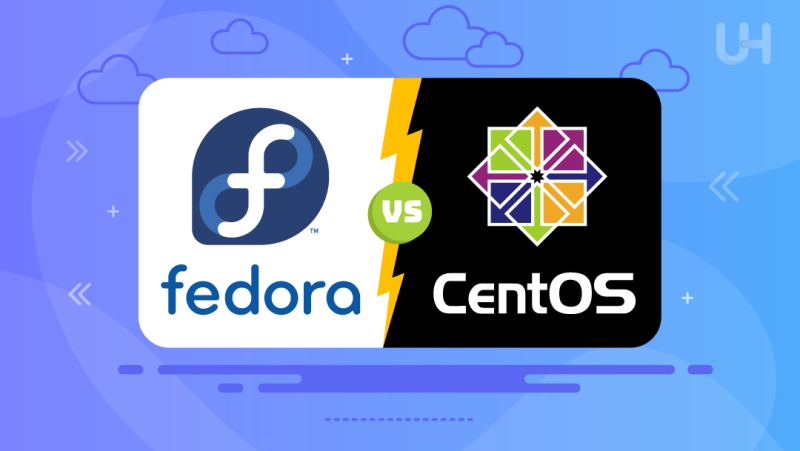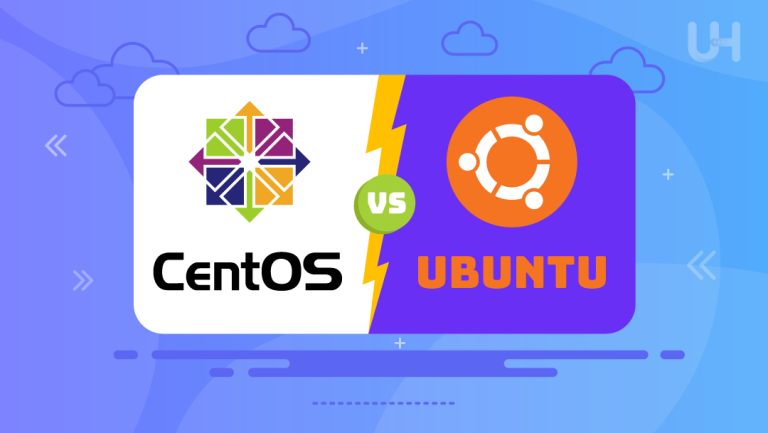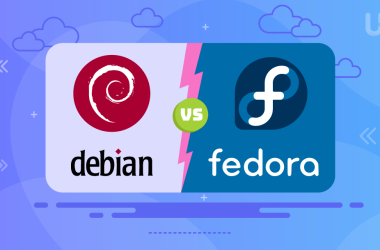Wanting to choose the right Linux distribution can be daunting when torn between two such popular options: Fedora vs CentOS. The former is best suited for developers/testers working in a somewhat unstable environment, but the latter is often used in a production environment. Both distributions are highly regarded within the Linux community; they serve different purposes and have unique characteristics.
In this article, we compare Fedora vs CentOS by examining key features and differences to help you choose the right distro for your needs.
What is Fedora?
Fedora is a bleeding-edge, Linux-based distribution that is much better known for its innovation and great support of the newest technologies. It enjoys active sponsorship by Red Hat, serving as a playing ground for new features destined to find their way into its production sibling, Red Hat Enterprise Linux (RHEL). One of Fedora’s aims is to provide the latest, stable software and technology at the forefront for convenience; this has contributed significantly to its popularity among developers and other tech-savvy enthusiasts.
Key Features of Fedora
- Up-to-date: Fedora releases a new version every six months on average. This will make recent features and software available.
- Innovation: It is a pioneer in adopting new technologies and improvements.
- Large Community: With Red Hat sponsorship, it has large community support for substantial documentation and support.
- Security: This insists on strong security practices, and it comes with SELinux (Security-Enhanced Linux) as part of the default setup.
- Developer-Friendly: This would be very good for developers, as it offers many tools and many programming languages at one’s fingertips.
What is CentOS?
CentOS (Community ENTerprise Operating System) is a Linux distribution that provides a free and community-supported computing platform, creating functional compatibility with its upstream source, Red Hat Enterprise Linux (RHEL). CentOS’s main features are its stability and long-term support, which explain its wide application in server environments. This makes it perfect for enterprises looking for a free alternative to RHEL.
Key Features of CentOS
- Stability: This robust and stable environment is perfect for servers and production systems.
- Long-Term Support: CentOS versions are updated and supported for as long as 10 years, that is, viability in the long run.
- Security: This is similar to Fedora, as it comes with SELinux for advanced security.
- Compatibility: Fully compatible with RHEL; allows easy portable migration between the two.
- Enterprise-Ready: Delivers enterprise performance without the price tag and has a community of users and developers behind it.
Differences Between CentOS vs Fedora

Although Fedora and CentOS originated in Red Hat, they differ in focus, aiming to serve different target audiences and various use cases. There are several differences between these two distributions:
Release Cycle
Fedora has a six-month rapid release cycle for new versions. Hence, users can always have the newest software with the latest features. Regarding the update frequency of Fedora, users can always start using the most current and advanced technologies immediately after their release. This is very useful for developers who want to test their Android apps against the most recent platform and for those who like trying out new features.
CentOS updates occur less frequently. It focuses on long-term support and stability. Conversely, CentOS supports versions for up to 10 years at a time, which is an important factor for businesses that want a uniform and reliable environment to run their operations. This translates to fewer updates or changes, less potential instability, and easy maintenance over time.
Elevate Your Hosting Experience Today!
Trying to decide between Fedora and CentOS? UltaHost’s Linux VPS hosting can support your choice and optimize your performance, whether you need the latest features or a rock-solid server environment. Make the right decision today!
Stability vs Innovation
Fedora is designed to be at the forefront of innovation, and as such, it usually comes with the latest software and technologies. This gives great value to any developer or enthusiast who wants to work with cutting-edge tools. Fedora tends to deploy the latest technologies first and then test them before pushing them into other distributions. The open, innovative philosophy of Fedora ensures that the users will always be on the frontline.
On the other hand, CentOS is towards stability and reliability; this makes it highly feasible for use in a dedicated server 10Gbps environment and enterprise applications where downtime is unacceptable. In a way, CentOS is more of a free clone of RHEL with similar standards of stability and security but without the cost that comes with them. Because of this focus on stability, CentOS became an excellent production server, as the principal issue at that time was always keeping it up and running, along with the fluent running of critical hosted applications.
Target Audience
Fedora is for developers, techno-enthusiasts, and those curious enough to keep up with innovative technology. It should please all the users who simply love to play around with fresh software or give their input toward an open-source initiative. The army of Fedora users is largely technical, contributing to developing and even testing new features.
On the other hand, CentOS targets enterprises, server administrators, and users who need a robust and stable platform to support production environments. CentOS targets every business size, from small startup businesses to large corporations, educational institutions, and government organizations. Stability and long-term support make CentOS a trustworthy choice in any environment where reliability is paramount.
Package Management
Both Fedora and CentOS use RPM as the package manager, and the update policy and repository management are different. Fedora has the latest versions of the software packages in the repositories, meaning that one can always get the newest features available. This ranges from a large number of applications to development tools, making Fedora a very good platform for software development and testing.
Conversely, CentOS focuses on stability and only redistributes well-tested packages that, while not necessarily the latest, are undoubtedly stable and secure. Every piece of software within the CentOS repositories is carefully selected to be free from any bugs and to ensure that it is reliable for the system’s stability. Such conservativeness in package management ensures that no risks are carried out with CentOS-running systems in case unexpected problems arise due to untested updates to the software.
Community and Support
A very active community supports Fedora that answers questions and has large documentation through forums, mailing lists, etc. Red Hat sponsors the distribution, so they bring in a lot of resources. There are various ways to seek help, guidance, and advice from the community and the resources sponsored by Red Hat. Such proximate access to support turns it into an excellent option for people looking for a well-established, active, and committed community.
It also sports an active community, particularly in the enterprise and server administration circles. However, there are no official support channels from Red Hat for CentOS, and the enormous user base and offshoot nature guarantee easy access to help. Many of the users of CentOS are, in fact, renowned system administrators and corporate customers with experience with RHEL. For this very reason, people can easily find solutions to common problems. Moreover, the CentOS project is well documented and provides several resources—including an extensive help section—for effectively managing systems.
Fedora vs CentOS: Which One to Choose?
The choice between Fedora vs CentOS will greatly depend on your needs and use case. If you are a developer or any other tech enthusiast who likes to tinker with the newest technology and does not mind frequent updates, then Fedora is likely the way to go. It has a great developer-friendly environment with cutting-edge features—perfect for software development and testing new applications.
On the other hand, if you are running a server or looking for a stable and reliable platform for enterprise applications, then turn to CentOS. This long-term support and stability translate into your systems running smoothly with fewer maintenance requirements. In addition, it shares compatibility with RHEL, which lets you easily migrate to a paid Red Hat subscription in case your needs increase. For those focused on security and penetration testing, considering a Kali Linux VPS might be beneficial as it offers tools specifically designed for these purposes.
Fedora can be very good for modernized educational environments or institutions where the latest software must be taught since it has continuous updates with innovative features. On the other hand, businesses and organizations that need long-term, dependable solutions will find CentOS a perfect match.
Conclusion
In the Fedora vs CentOS debate, each one is the right answer, depending on what you want to do and what your goals are. Fedora is great for innovation; it’s perfect if you would like to be ahead of the curve regarding the latest technologies. CentOS leads the way for business-critical enterprise environments and production servers with the key theme of stability and long-term support. Knowing what sets them apart and some of the high points of each, you can decide upon one that suits your needs. Be it CentOS or Fedora, each distribution has strong features with powerful community support to ensure a reliable Linux experience.
Optimize your server environment with Fedora or CentOS through UltaHost’s CloudLinux VPS for peak performance and stability. Enhance your server management by choosing the perfect distro and leveraging CloudLinux’s robust capabilities.
FAQ
Which distro has better security features?
Fedora quickly includes the latest security enhancements, while CentOS focuses on stable, tested updates for enterprise environments.
Which distro is better for a production server?
CentOS is better for production servers due to its stability and long-term support.
Is Fedora or CentOS more developer-friendly?
Fedora is more developer-friendly, offering the latest tools and technologies.
How do Fedora and CentOS handle software updates?
Fedora offers frequent updates with the latest features, while CentOS provides fewer stability-focused updates.
How does community support compare to Fedora and CentOS?
Both have strong community support. Fedora has Red Hat backing, while CentOS has robust enterprise community support and RHEL compatibility.











